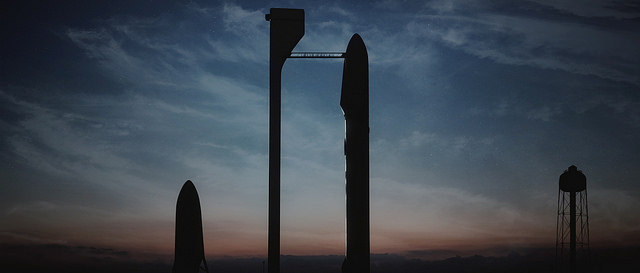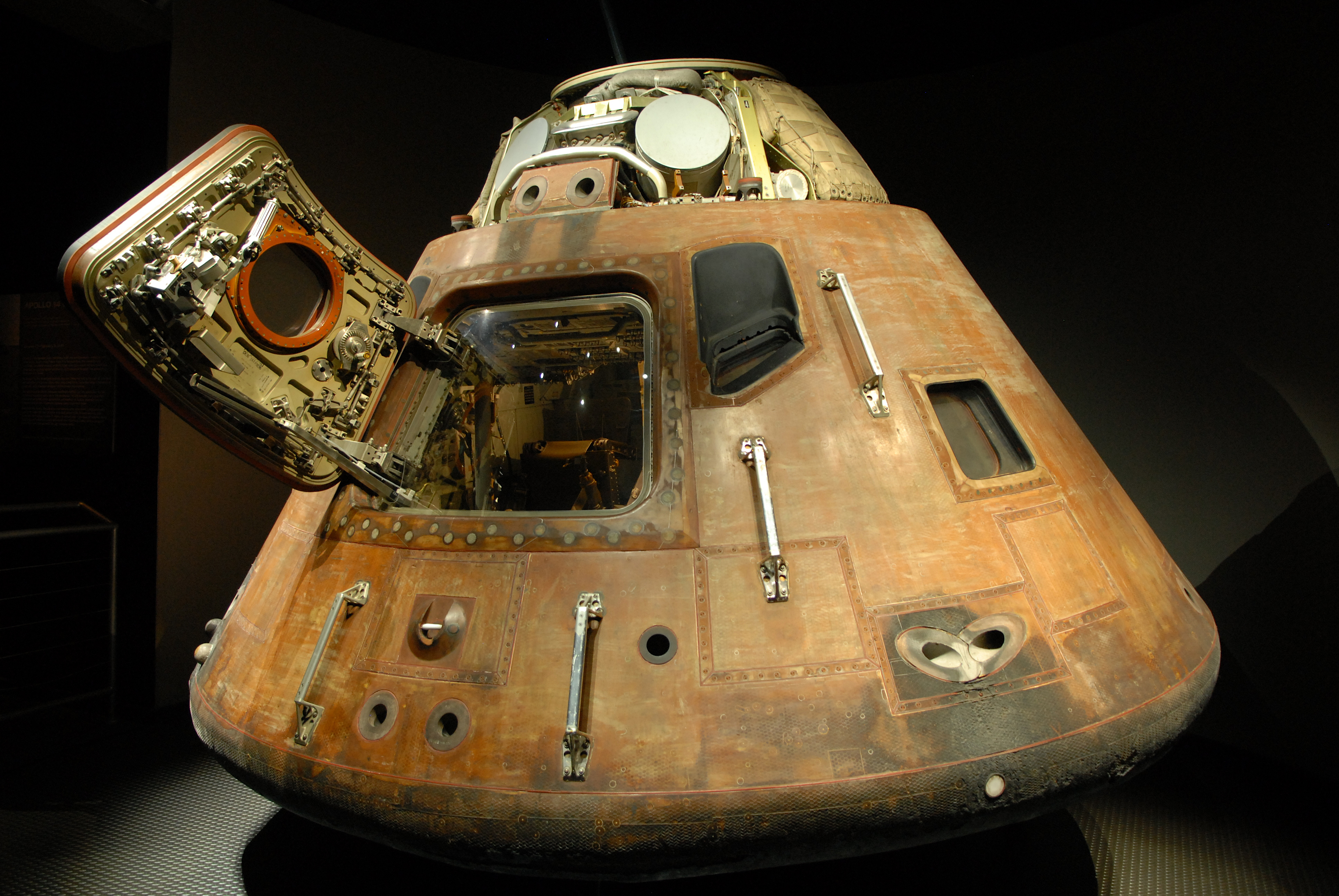
SpaceX is planning to use the above equipment to get to Mars, while NASA is planning to recreate the early accomplishments of this equipment:

Consider the contrast between the following two reports.
- In the private sector, scientists are working to figure out how to set up an infrastructure to support asteroid mining.
- At NASA, scientists are working to repeat the mid-60s task of getting a crewed spaceship out far enough to loop around the moon; not land on the moon, just fly around it. In other words merely repeat part of what they did fifty years ago.
11/21 – Space.com – Extraterrestrial Gold Rush: What’s Next for the Space Mining Industry? – A conference dived into the issues underlying what will be needed for the space mining industry to thrive.
A supply system will be needed to support the industry. Distribution. Specialized firms that must all work together. I picture something like the complex web of specialized companies that exist in the oil or mineral mining industries here on earth.
As I keep learning about the oil drilling world, I am astounded by the range of companies that exist to get gas into our cars.
Amazing thing is that really smart people are thinking through what that is going to look like to successfully mine asteroids.
12/2 – Behind the Black – The ever shrinking and delayed Orion/SLS – I’ve been catching on to the idea that NASA’s new Orion capsule and SLS lift vehicle are not a serious competitor to SpaceX and the other new, private sector companies.
Finally read an explanation from Robert Zimmerman that puts Orion/SLS into context. More info at Space News, NASA considers shorter first crewed SLS/Orion mission.
The entire Orion project consists of two planned launches. The first, EM-1, will be an unmanned trip to the moon with a few days orbiting. The second, EM-2, will be a crewed trip circling the moon but not going into orbit, which makes it a simpler, less risky trip but doesn’t really do much that EM-1 will do beyond prove the Orion is livable.
The Congress has only given a limited budget, and with the extremely high cost (that is from Mr. Zimmerman; I don’t have the numbers handy and won’t bother to look them up), only two capsules and two launches are planned.
The risk of this approach is that large numbers of systems will be tested simultaneously instead of incrementally, like NASA did in the ‘60s and the other companies are doing today.
The reward of this approach is to merely repeat some of the accomplishments of the 1960s.
These launches are scheduled for 2018 and 2021, with BtB expecting EM-2 will slip to 2023.
Anyone want to guess where SpaceX will be by 2023?
Their target is to have already sent several cargo ships to Mars starting in 2018 with a goal of a crewed flight to Mars by 2024.
So here is the picture:
- 2018 – SpaceX starts cargo runs to Mars
- 2021 or 2023 – NASA launches a crewed Orion for a loop around the moon, not landing and not even into orbit
- 2024 – SpaceX sends first crewed capsule to Mars
So SpaceX will be on their way to Mars while NASA repeats the accomplishments of one of the early Apollo launches.
Update: Check out the comments for some ideas on what NASA may be planning that isn’t visible in the above discussion.
I assume NASA is going back to the moon to see how mankind affected its environment.
Hi Bruce:
Could be. Um. Except that they don’t have any plans to land. EM-1 mission will be unmanned and will orbit the moon. EM-2 will be manned but will not go into orbit, just take a big swing around and return to earth.
Jim
Something else to consider, the ISS isn’t supposed to be around too much longer. Think its current end date is around 2023. It can be extended but our international partners want a lunar village. There has also been recent talk of building a cislunar cycler. Russia and China both want a lunar presence also.
So NASA has larger plans than just doing a flyby but who knows if those plans involve SLS or something else.
SLS uses the old space shuttle engines and there is a finite supply of them, enough to get off a couple launches. They are supposed to be working on replacements but from my extremely limited knowledge of rocketry, it doesn’t sound like engines are plug and play.
I suspect that while Musk wants to go to Mars, he will be more than happy to help NASA play in whatever playground they want.
Hi:
That is all brand new info for me. Very cool. It would be great (in my opinion which matters to no one!) if NASA has more plans than what are visible at the moment. Mining the moon would be a great idea. Water for propulsion and all that. Again in my opinion, having the Chinese and Russians and NASA and SpaceX and a few others on the moon with ongoing operations would be a great idea. The competition between all of them would make all of them better.
Thanks so much for taking the time to comment! Good info!
Jim